► 35.5 kWh battery is best for CO2…
► But small range could limit appeal
► MX-30 costs from £26,045 OTR
Mazda has been selling the MX-30 electric SUV since 2020 – but the big question is: have you noticed? Sales of the first fully electric Mazda have been modest to say the least. And we’re not sure the mildly tweaked 2022 variant is going to make much difference.
While on the one hand that’s a little sad – the MX-30 is a good-looking compact crossover, with a beautifully built interior and that beautifully simply Mazda infotainment system – on the other it’s entirely unsurprising.
For Mazda, in its infinite wisdom, has delivered a modern electric SUV with a tiny 35.5kWH battery pack and utterly underwhelming 124-mile official driving range. Which, as we all know, means you’ll be lucky to get a 100 miles out of it in the real world, assuming you’re taking a trip on a moderately balmy day. Right?
So why on earth should I care about the Mazda MX-30?
Despite the obvious pachyderm in the corner, there is a lot of Jolly Good Mazda Stuff going on here. The driving position is excellent, the interior intricacies include the use of cork as an unconventional trimming material – a nod to Mazda’s origins – and the ‘Freestyle’ rear doors open backwards. Like an RX-8.
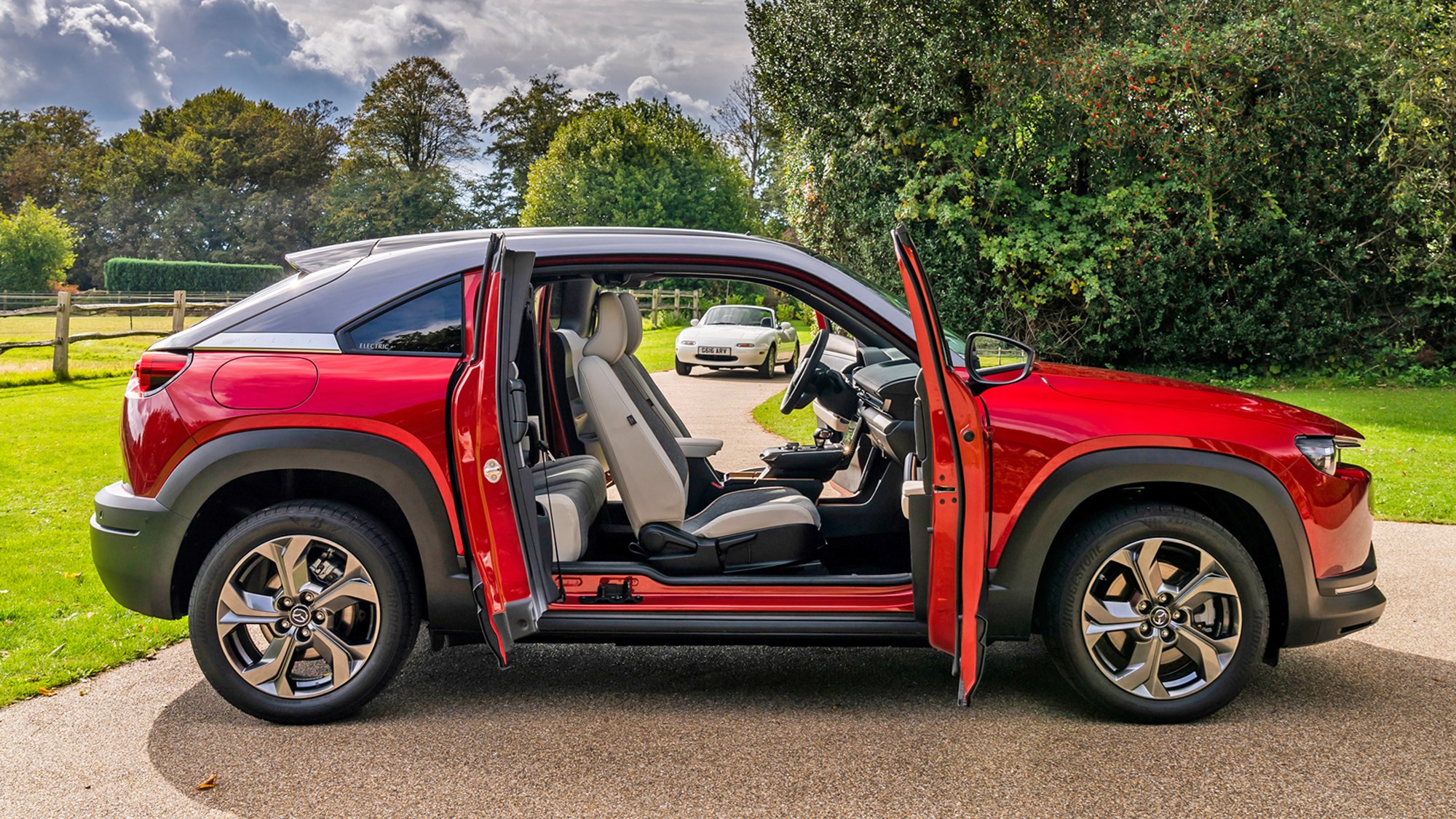
Overall, the MX-30’s a distinctive crossover-coupe shape, but it’s not as brave as Mazda could have gone – technically, it’s very obviously derived from a conventionally-powered car, and on paper at least, seems to offer few clear advantages over the growing list of electrified rivals.
Although, as ever, Mazda has also conjured a rather engaging driving experience to go with that appealing exterior.
Is it at least fast?
No… The motor produces a modest 143bhp and just under 200 lb ft of torque – not necessarily the numbers you’d associate with Mazda’s sportier MX wing, but the MX-30’s 1,645kg kerb weight is not that far off conventional crossovers’ heft of a couple of years ago and thus has an advantage over many rival electric SUVs.
Even so, it still only manages 0-62mph in 9.7sec, and top speed is limited to 87mph so you don’t get carried away and flatten the battery in about 15 minutes.
It’s bad form to talk about your birthday at Christmas, but when you look under the bonnet at the electrical gubbins, there’s an astounding amount of empty space. You could comfortably fit a person in the room left behind when the CX-30-derived chassis is stripped of such fripperies as gearboxes, exhaust pipes and things to keep emissions away.
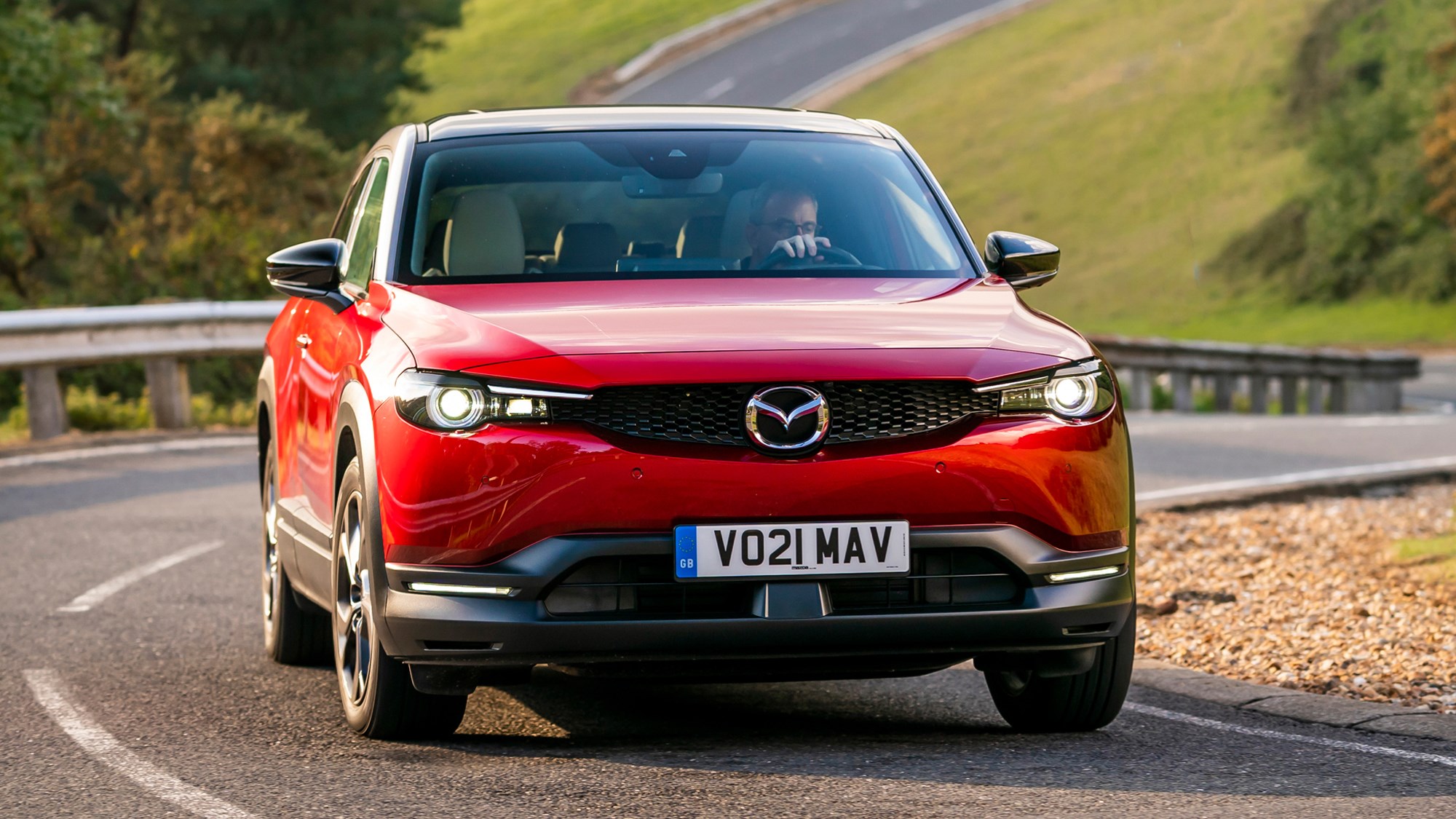
Mazda has a better idea than a modern-day priest hole in there, apparently – though the promised range-extender version is still yet to materialise. Japanese buyers can even buy a conventional 2.0-litre Skyactiv petrol MX-30; in some ways, this really is the closest we’ll get to an MX-3 follow-up. As long as we’re not being denied an exquisitely tiny V6, the electric motor is plenty.
Why is the MX-30’s battery so small?
It’s not small, it’s optimised. Cough.
Actually, that’s not as mealy-mouthed as it sounds; there’s some logic behind the capacity. It’s enough for a claimed 124-mile range (164 miles of city driving), which Mazda has calculated is plenty for the average daily driving of British commuters and families.
The small size means it’s also quicker to recharge fully on a home wallbox – though a 50kW limit to fast charging means you’ll still need to be parked up for 26 minutes to go 20 to 80 per cent on a DC ‘fast’ charger. And that’s for the 2022-onwards model; the first cars were limited to 40klW and took 10 minutes longer.
Mazda’s justification is that most users don’t actually need a huge 75kWh battery, and making those big batteries involves a lot of raw materials and energy. Enough to significantly contribute to the embedded environmental cost of a car, which in turn affects how long your electric vehicle really takes to be better than a conventional car and its ongoing consumption and pollution.
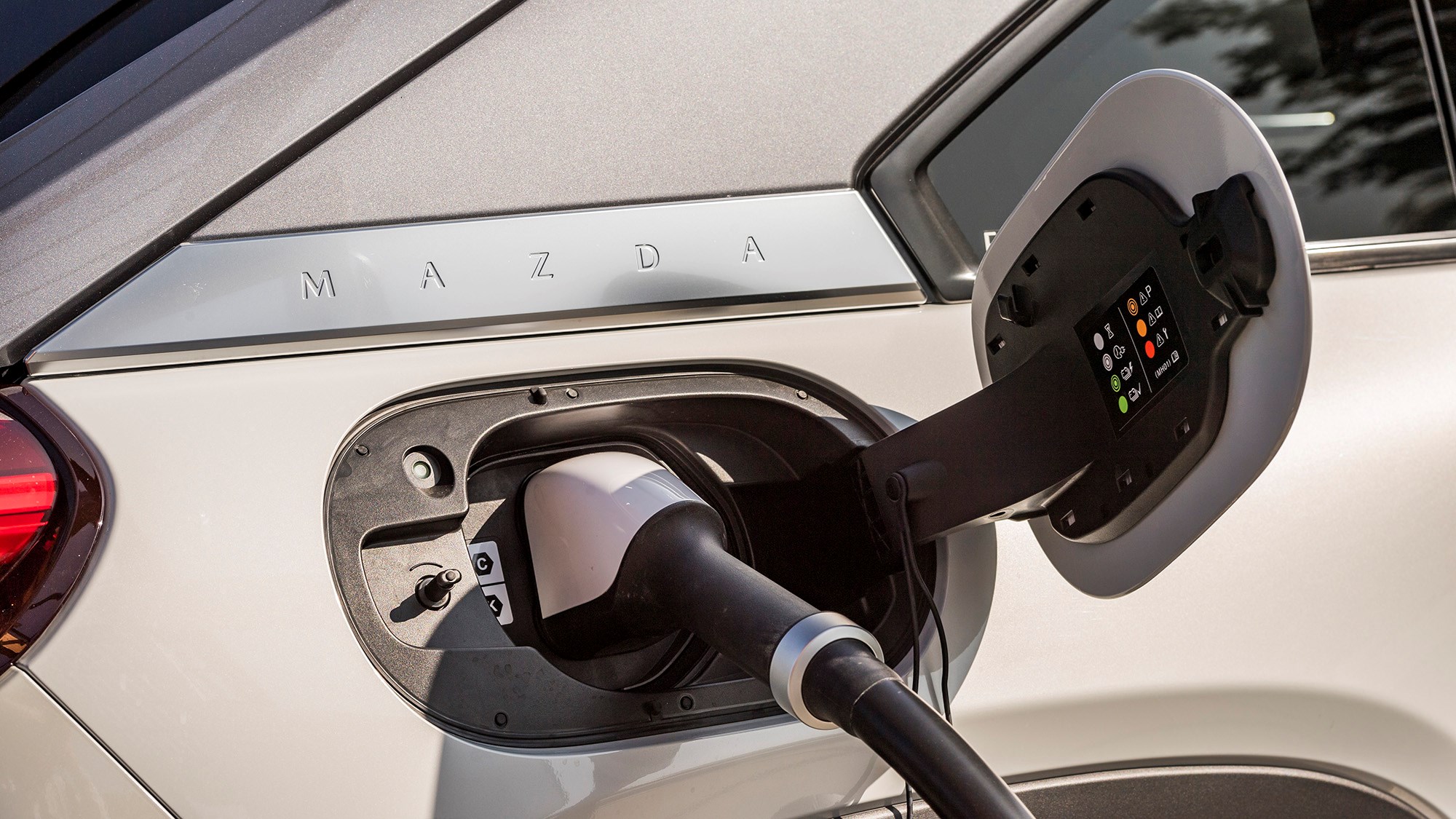
While not a scientific measure (your mileage may vary, literally), the smaller battery effectively halves the additional impact over a conventional car and, crucially, brings the ‘break even’ point forward to the stage where the initial owner of the car could see the benefit.
Most large-battery EVs will only give a return on that initial CO2 investment around the same time the conventional car is considered well-used and due for replacement.
This is all very well and worthy – until you need to do a slightly longer trip, say, at the weekend. Even a destination as little as 50 miles away is going to take additional planning. Some will be prepared to account for this, though perhaps not many.
But here’s the real surprise: The MX-30 does not drive like a typical electric car – and in the process, it doesn’t consume charge like a typical, hot-off-the-line EV either. Perhaps there’s more to this smaller battery idea after all than mere marketingspeak to explain away a flawed product planning decision?
Does the MX-30 feel like an ‘MX’ Mazda to drive?
Mazda is known for making cars that grow on you, as a driver, without necessarily screaming about their prowess externally. Even the RX-8 has hidden depths, should you try a good one, but it’s when you look to models such as the Mazda 6 that the differences are thrown into sharp relief.
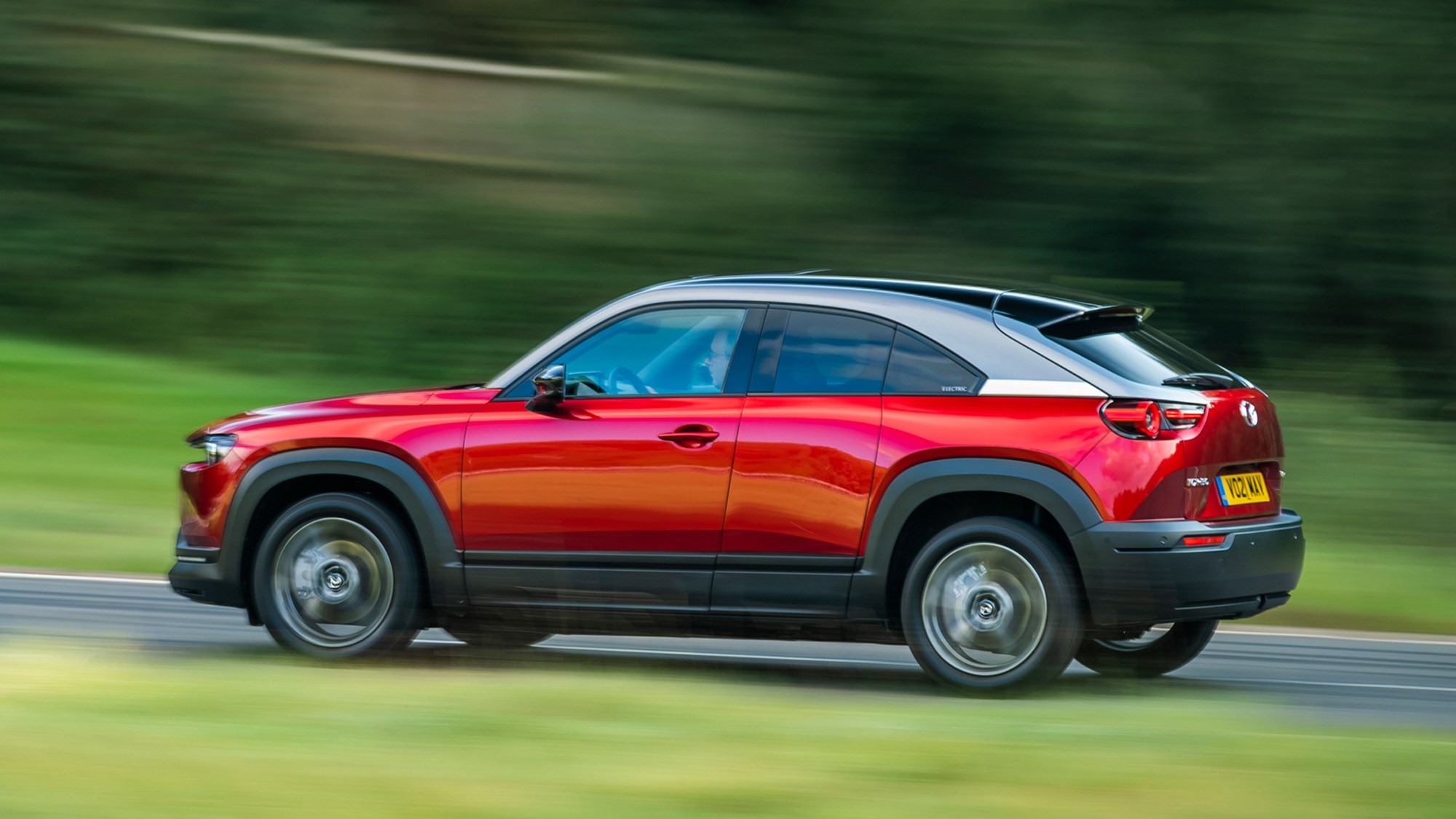
That’s all traditional engineering, right? BEVs are a different proposition entirely, all instant torque and iron fist with a silent punch hilarity, until the charge runs out and you drive like the proverbial nun. Including a bit of praying.
Just as the MX-30 is exactly the sort of essentially conventional with a dose of quirkiness you’d expect Mazda to produce, even without batteries, the firm’s made it drive like an ICE-powered car: tractable from urban speeds to motorway, revs ever increasing, and wonderfully satisfying.
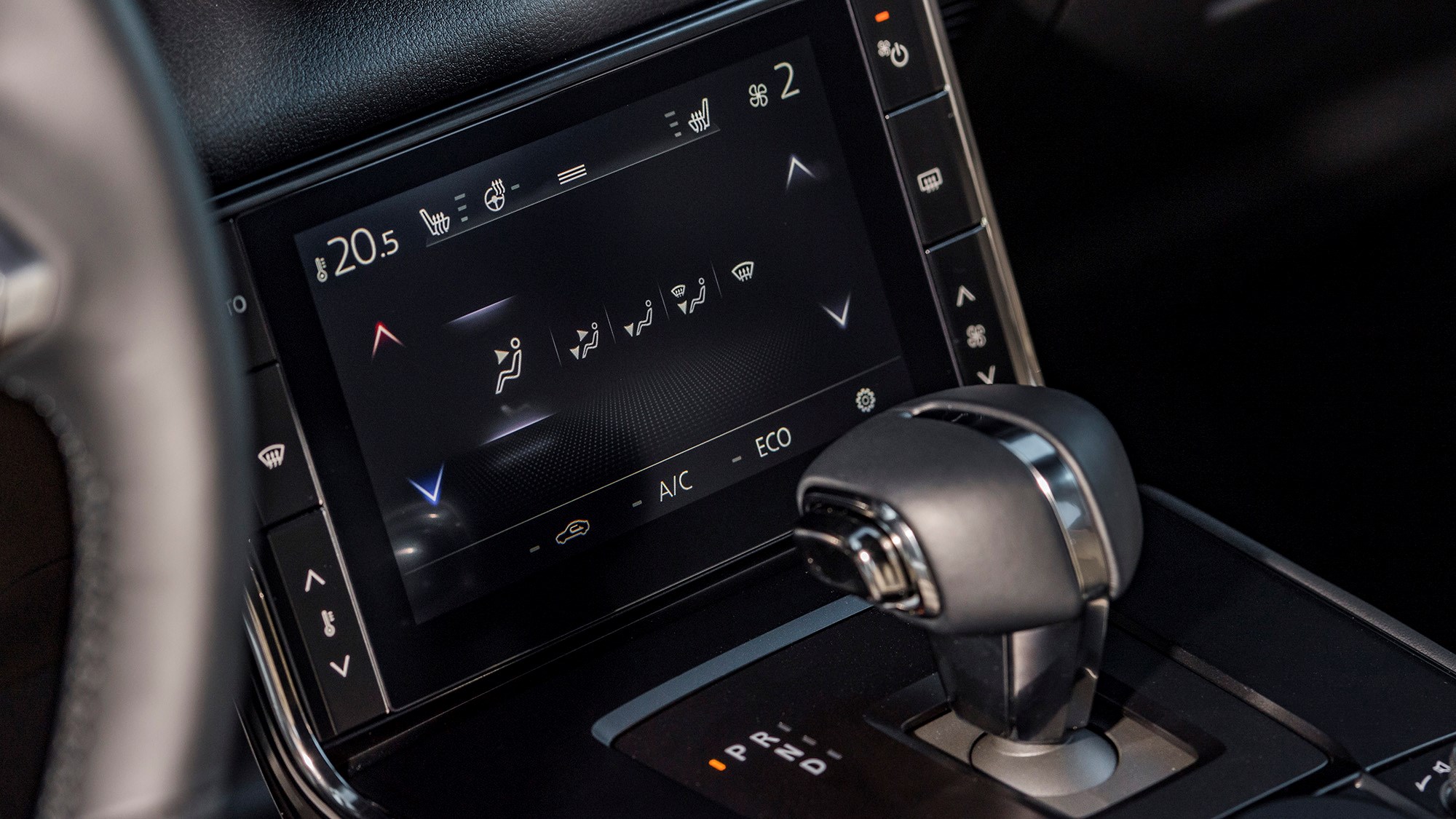
Torque-map and touch points all contribute to this eerily familiar sensation. The motor control pedal (the one under your right foot – there’s little pretence of ‘one-pedal driving’ here, though it’s got the ability to come close) is a floor-hinged, organ-style one that’s long, supportive and very, very progressive and controllable. It’s the kind of detail that contributed to the lazy, unhurried style of driving that a big old Mercedes would encourage, and it makes driving the MX-30 a real pleasure.
Even the stubby transmission lever is reassuringly mechanical. There are paddle shifts for regenerative braking, which defaults to a mid-way position and can be reduced or increased to suit, so the lever is purely a forward/reverse selector, but an unusual ‘move sideways to park’ adds an opportunity to engage with the car physically rather than pushing another button.
The parking brake’s electronic, though. Well, you can’t get everything right.
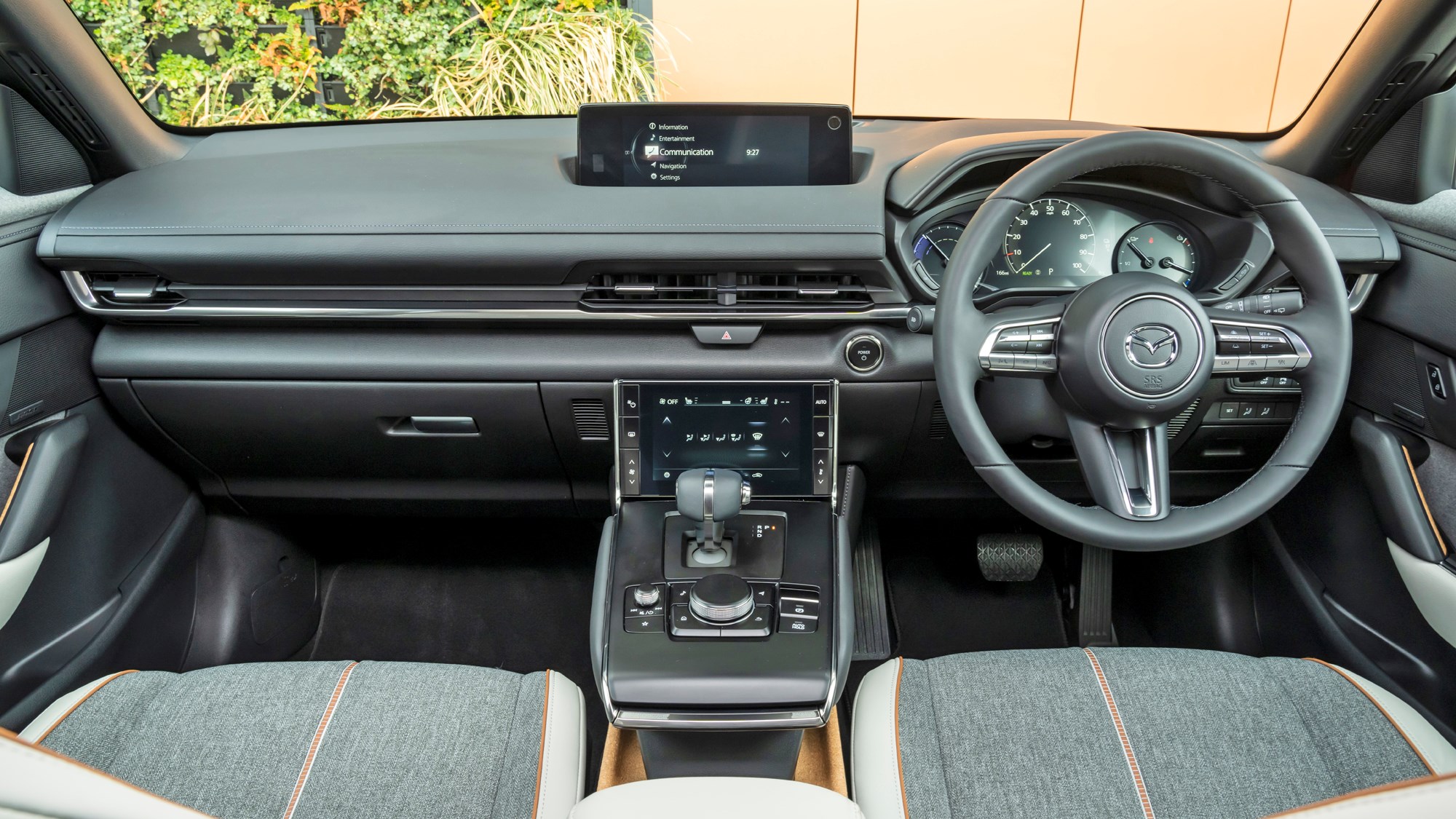
Encouraged by the artificial combustion and well-weighted, direct steering, you press on; the 0-62mph time of 9.7 seconds feeling entirely reasonable. Bends are drawn in a smooth arc, with confident aim, and it takes a moment to remember that this is an electric car at all – there’s some torque-vectoring technology, but there’s pleasure to be found in absorbing the feedback and actually driving the car, not seeing how long the sensors can keep you on the road in denial of physics.
Brakes are an area that some electric cars feel lacking in, with precious little pedal feel as your foot pressures the pedal further, with nothingness giving away to a sudden halt. Not the Mazda: easy to modulate, whether you just want to quick pre-bend glance to push the balance over the front axle, or the achor’s been tossed for an emergency stop. The engineers have really thought about this and it resonates from every contact point.
When your brain catches up, the difference in weight, in attitude, between the MX-30 and any other electric car in this price range dawns. There’s none of the stodge, the roly-poly cornering or aggressively controlled weight management ruining the ride. It’s basic stuff – just McPherson struts and torsion beam – but so were some of the most delightful hot-hatches ever made, and the MX-30 carries their spirit in its springs.
What about the passengers?
Mazda’s deployed a three-ring structure for the MX-30, surrounding the batteries and passenger compartment. It’s torsionally stiff and allows the suspension to compensate for the road and not the body. The result is a pleasant, predictable ride and good refinement.
That goes some way to compensating for the compromised side view out the rear passengers get while perched on the attractive, but quite shapelessly flat rear bench. Being positioned quite upright below a tapering roofline isn’t as claustrophobic as you might expect, and sculpted front seatbacks mean two adults of average height can sit tandem, but you’re peering out of a porthole set in acres of black plastic and legroom is, don’t doubt it, restricted.
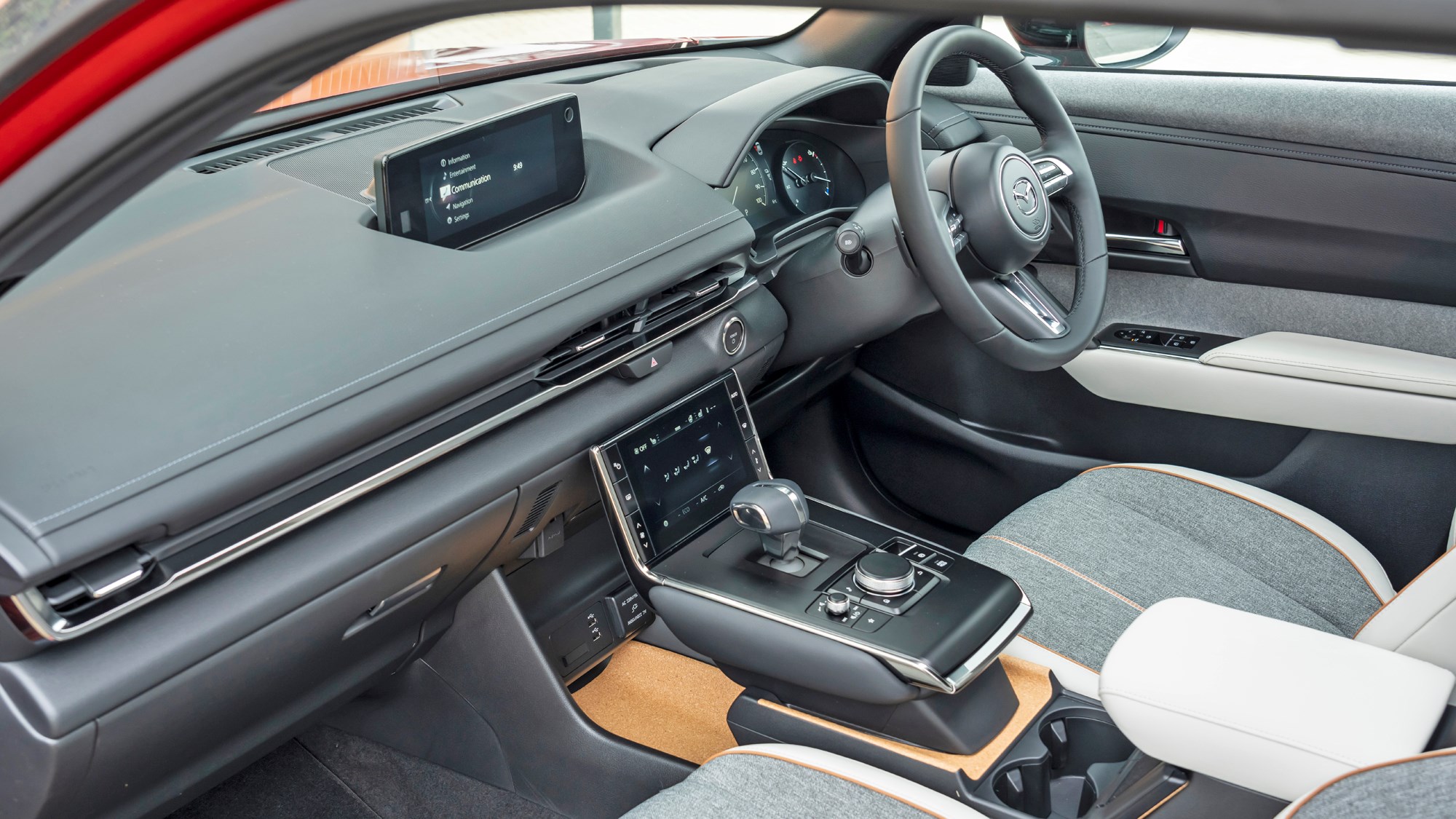
Smaller passengers are easier to deal with though, thanks to the seat topography and Freestyle doors. Child seats are the right height and unobstructed, making this one of the easiest electric cars you’l find if you’ve got infants or toddlers. There’s a reasonable 366-litre boot, too (you’ll lose a few litres if you have the Bose audio).
That square, padded seat structure is carried through to the front. Seats are very subjective, so first-person opinion here: I thought they were great, and suspect most people will appreciate the same qualities – chunky padding that’s like a firm memory foam mattress, well-shaped bolsters that hold you without being constricting, and just the right amount of lumbar support and width for shoulders. The materials are nice, too, but the most distracting thing in the MX-30 is the appearance of cork.
This natural material (much of the interior is vegan-friendly natural or environmentally-friendly recycled) is found not only on the centre console and simple, neat covered cupholders, it’s inside the door pull handle on the higher specifications too, where it’s a welcome tactile change from plastics.
Mazda hasn’t taken your pinboard and glued it to the dash – the cork is a special, high-density material that’s been treated and covered so it won’t absorb spills or age rapidly.
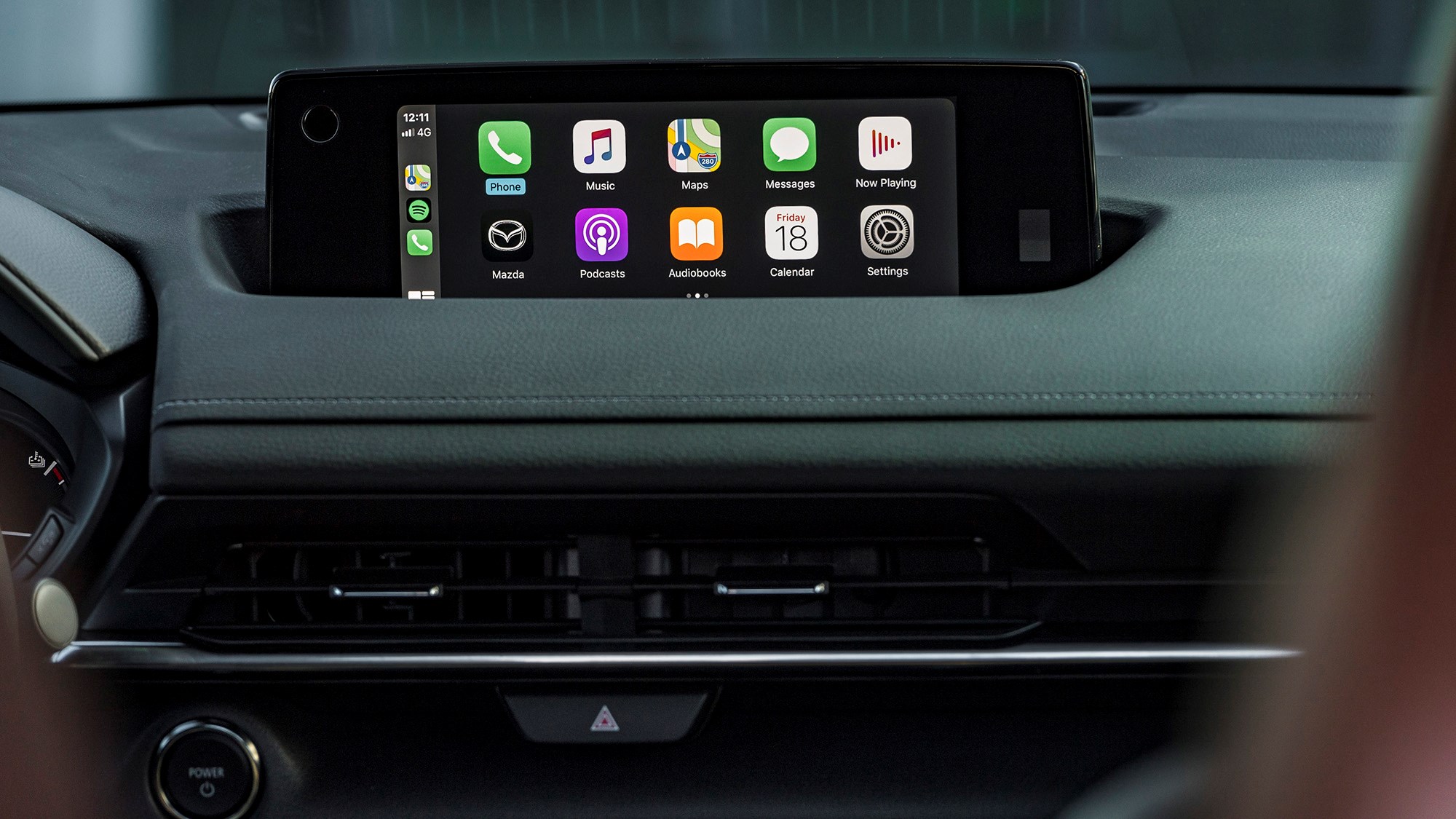
All MX-30’s are generously equipped, including a head up display and adaptive cruise control and lane keeping on all models; options really are all about convenience and personal preference, instead of being essentials for you to pay extra for. The price becomes even more appealing when you compare the overall package with rivals.
Infotainment is fully-featured, with Android Auto nd Apple CarPlay support included and Mazda’s intuitive rotary control. It’s supported by steering wheel controls and a clear, crisp dashboard display.
Perhaps the only thing the classy, well-built cabin is lacking is a set of multi-coloured slivers of ambient light.
Mazda MX-30: the CAR verdict
After spending close to a thousand miles with one, it’s easier to see that most people, most of the time will find its 124-mile range more than sufficient. The ‘most’ part could be a real sticking point, though.
However, if you’re concerned about 124 miles because you’ve heard typical 250-mile BEVs really give 150 miles, you should give the MX-30 a chance – the way it delivers and uses power, and has been carefully tuned to keep you involved rather than remote, means it’s more likely to deliver that full range.
The Mazda MX-30 is an affordable EV that has real appeal for drivers, too. And it’s genuinely appealing – not in a ‘OMG this is so fast’ way like a Tesla. It’s satisfying to drive and would be just as satisfying with a regular engine; most electric cars are a compromise we accept because of the halo effect of being green.
Car leasing offers »